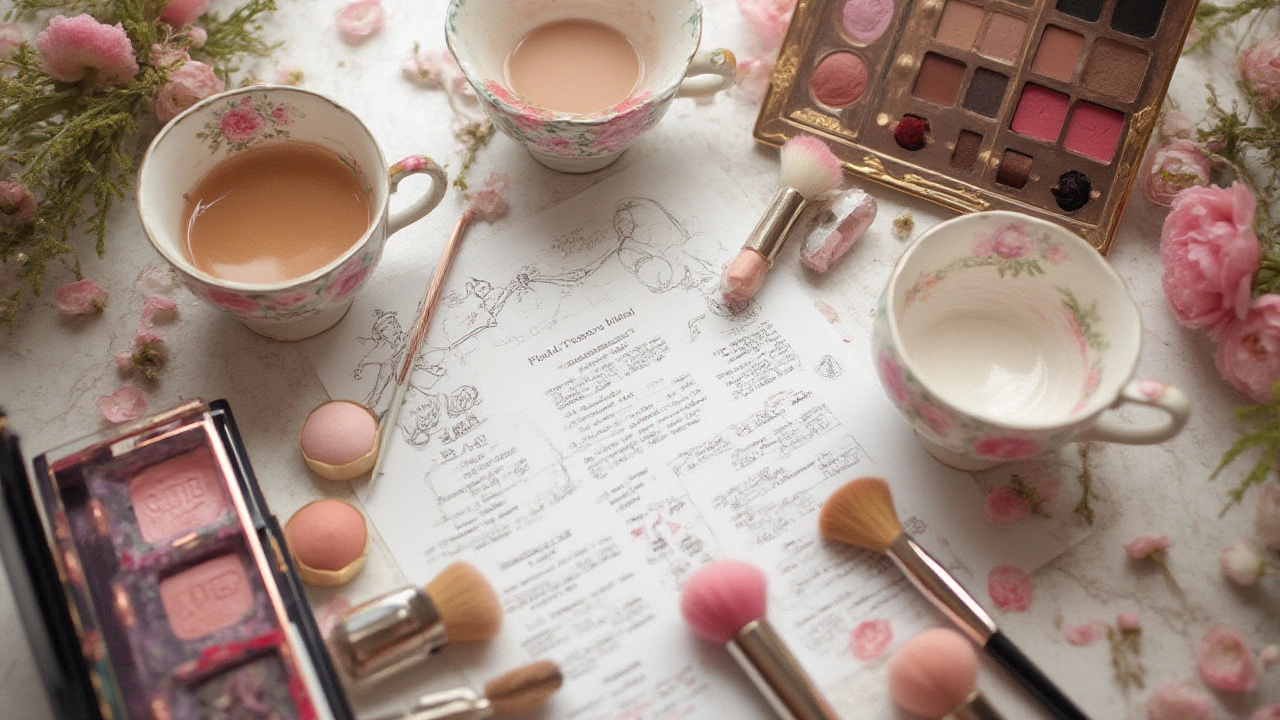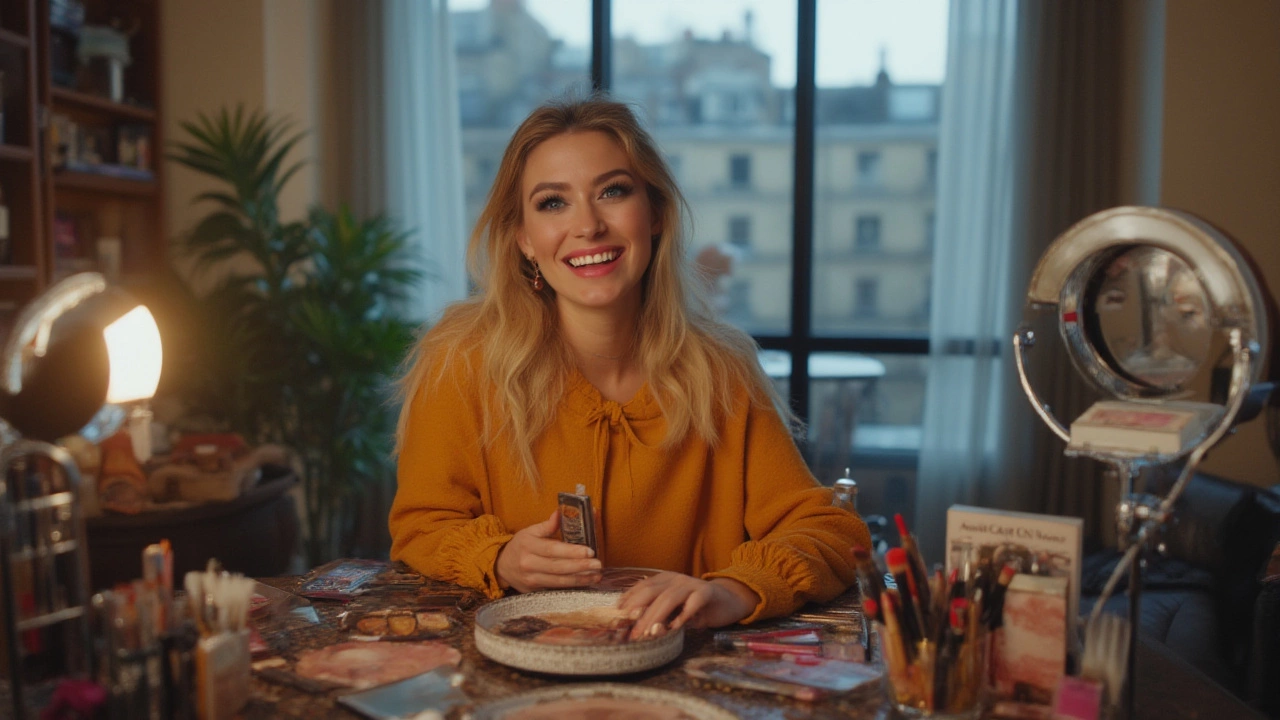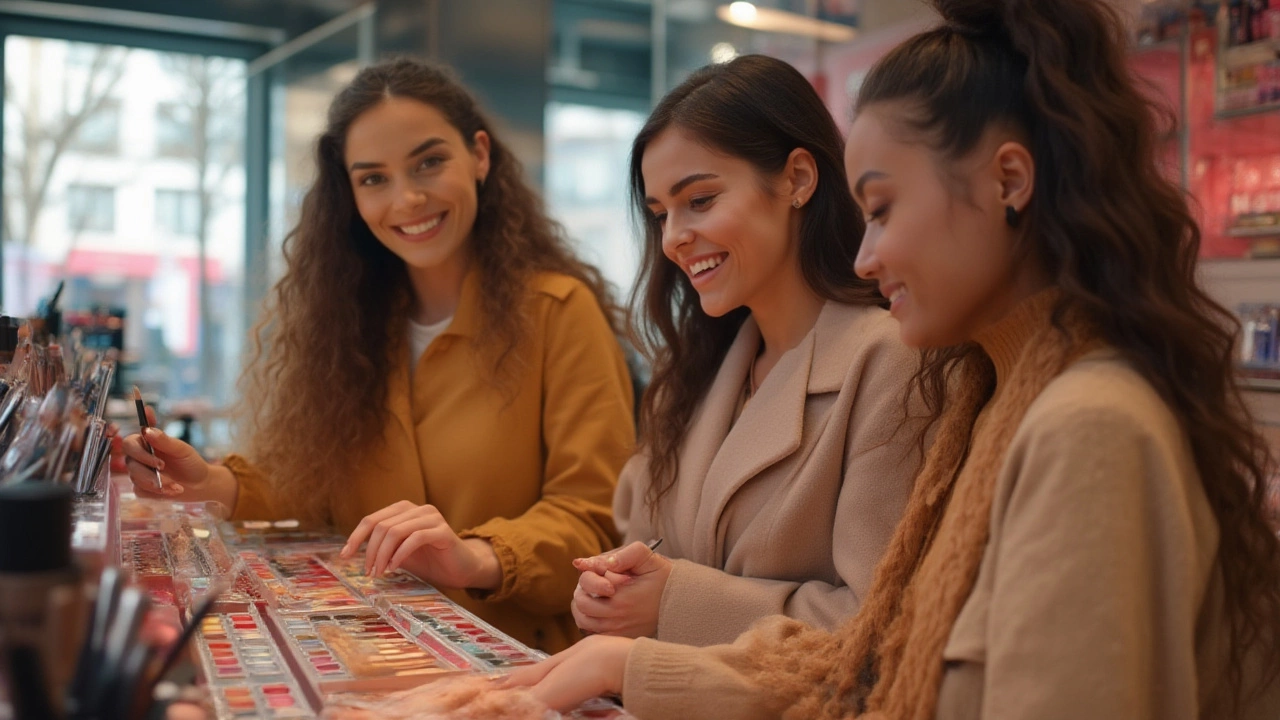Half the fun of makeup shopping is the endless promise: flawless skin, lashes for days, that elusive “glow” you never quite nailed in high school. But step into any giant beauty store or scroll TikTok for more than three minutes and it’s chaos—hundreds of brands, influencers swearing by secret hacks, and shelves packed with colors you can’t even pronounce. It begs the question—who really rules the makeup scene in the USA? Is there a brand that stands out from the crowd, dominating vanities from New York to LA? Or do a handful of names jostle for that top spot, each with their own unique flair?
The Heavyweights: Who Leads the Makeup Pack?
When it comes to sheer recognition, a few brands pop up everywhere—think MAC, Maybelline, Fenty Beauty, and Estée Lauder. Each one has its own legion of fans. Take best makeup brands—everyone has an opinion on who deserves this title. MAC has stayed power; makeup artists in major cities still swear by their vivid pigments and pro-friendly formulas. Meanwhile, Estée Lauder is the old-school favorite, having been around since the 1940s and somehow making foundations folks genuinely love (Double Wear, anyone?).
Now, look at more recent darlings. Fenty Beauty, the brainchild of Rihanna, is praised almost universally. Why all the fuss? Inclusivity. In 2017, it launched with 40 (now 50!) foundation shades—something the industry just didn’t have before. For people with different skin tones, this wasn’t just marketing—it was a revolution. If you want the numbers, Fenty Beauty made over $500 million in its first year.
On the other side, Maybelline and L’Oréal win for accessibility. Their stuff is everywhere—drugstores, supermarkets, online shops. And despite the lower price, they keep adding high-powered hits. For instance, Maybelline’s Lash Sensational mascara and Fit Me! Foundation both routinely nab top rankings on Amazon and Ulta.
Here’s a quick look at how these major brands stack up, with average prices and shade ranges based on 2025 data:
| Brand | Flagship Foundation Count | Shade Range | Avg. Price (USD) | Vegan Options |
|---|---|---|---|---|
| MAC | Studio Fix Fluid | 63 | $38 | Some |
| Fenty Beauty | Pro Filt’r | 50 | $40 | Yes |
| Maybelline | Fit Me! Matte + Poreless | 40 | $8 | Some |
| Estée Lauder | Double Wear | 56 | $48 | Some |
| L’Oréal | True Match | 47 | $11 | Some |
Notice the range? These brands don’t just compete on glamour—they’re neck and neck for price, quality, and who can match your skin tone best.
Trends Defining the Best Makeup Brands in 2025
The days of limited shades, tricky ingredients lists, and one-size-fits-all formulas are on their way out. Now, American beauty fans want more. First, inclusivity—that’s not a buzzword, it’s a filter for where people spend their money. The best brands now launch with diverse shade options (not an afterthought, but right up front). For instance, Fenty Beauty’s ripple effect sparked shade expansions everywhere: even old favorites like Clinique or CoverGirl hustled to add deep tones, olive undertones, and real-world hues missing from their old lines.
Second, clean beauty is more than just a label slapped on trendy packaging. Gen Z and Millennial shoppers read ingredient lists like scientists. They want formulas that are cruelty-free and vegan (or at least something close to it), and fewer “nasties” like parabens, sulfates, and synthetic fragrances. Brands such as Milk Makeup, Kosas, and ILIA saw major growth in 2024 because they “walk the talk” on transparency and ingredient safety. Milk’s Hydro Grip Primer trended on TikTok for being vegan, hydrating, and actually helping makeup stay on through a New York heatwave—no easy feat.
Sustainability is hot right now—both literally and in terms of customer demand. More Americans demand recyclable packaging or refillable compacts. Kjaer Weis, an indie label, made headlines for refillable metal cases, and even L’Oréal started pilot programs for post-consumer recycled plastics in their packaging last year.
Tech is part of the story too—virtual try-ons and AI-powered shade matching became huge thanks to the pandemic. Ulta and Sephora’s apps now have AR try-ons, making it easier to pick a lip or brow color that won't disappoint once you’re home. Glossier and Fenty Beauty took it further, sending samples based on quiz data you punch in online. According to a 2025 retail survey, 42% of American shoppers say they’re more likely to buy from a brand that offers these interactive features.

Best Drugstore vs. High-End Brands: Is Price the Deciding Factor?
Here’s something surprising—sometimes, the best-selling foundation isn’t the priciest. Maybelline’s Fit Me! Foundation rivals high-end options for finish and staying power. CoverGirl’s Clean Fresh line might cost under $10, but wins points for being vegan and lightweight (and it doesn’t settle into lines—huge win if you’re over 30). Drugstore brands update products quickly and collab with influencers to keep things fresh. Case in point: ELF Cosmetics. Its Power Grip Primer skyrocketed to the top of best-seller lists in early 2025, outpacing primers triple the price.
But let’s be real—high-end brands still have a certain magic. They offer luxe textures, rare pigments, and packaging you actually want to show off. NARS Sheer Glow has diehard fans who say the radiance is worth every dollar. Dior’s mascaras and blush trios pop up in celebrity makeup kits for a reason—they just work (and look gorgeous on a bathroom shelf). Frequently, it’s not just about how long products last, but that subtle “I’m worth it” feeling name brands bring. According to Ulta’s 2025 customer preferences chart, about 57% of shoppers mix and match brands from both price ranges for their everyday routine.
One thing to watch—high-end brands are now launching mini sizes for popular products. It’s brilliant. You get to try that cult-status lipstick or mascara, often for less than $15, before splashing out for the full size. Sephora notes that minis of Charlotte Tilbury’s Pillow Talk and Too Faced Better Than Sex mascara outsold full sizes two-to-one last holiday season.
Which Makeup Brand Has the Best Product for Each Category?
Okay, you want more than hype. So, let’s break down which American brands actually deliver in each core category—foundation, mascara, lipstick, eyeshadow, and brows. Here’s where things get interesting. Some brands are consistent stars:
- Foundation: Estée Lauder Double Wear is still a top pick for full coverage and mega staying power, but L’Oréal True Match Nude Serum won points in 2025 for its skin-blurring effect (and it’s less than $20).
- Mascara: Maybelline Lash Sensational and L’Oréal Telescopic have both held down “best mascara” lists for years. For splurge seekers, Lancôme Monsieur Big is a serious contender for fat, fluttery lashes—no falsies needed.
- Lipstick: MAC’s matte lipsticks are iconic. Everyone from bridal artists in Miami to drag queens in San Francisco swears by Ruby Woo. If you prefer non-drying, Fenty Beauty’s Gloss Bomb is a swipe-and-go option that flatters all skin tones.
- Eyeshadow: Urban Decay’s Naked Palettes are the “gateway” drug for shadow lovers. Well-edited, buttery pigments, and a range from office neutrals to bombshell sparkles. For fresh faces, NYX’s Ultimate Shadow Palettes deliver 16 shadows for less than $20.
- Brows: Anastasia Beverly Hills changed the brow game with their Brow Wiz pencil and Dipbrow Pomade. Even with the surge of microblading, these products are in steady rotation for makeup artists aiming for precise, natural arches.

Tips for Choosing the Best Makeup Brand for You
So, where do you even start if you’re lost in the makeup jungle? First, get real about your budget and skin type. Don’t waste cash on a killer high-end serum foundation if you only ever wear tinted moisturizer. Try before you buy, whenever possible. Sephora and Ulta are still the best at offering testers, and their staff usually have solid recommendations (especially for tricky undertones).
Next, check for inclusivity and your personal needs. If you have sensitive skin, peek at ingredient lists—brands like Clinique, BareMinerals, and ILIA are friendly for reactive skin types. If eco-conscious formulas matter to you, dig into a brand’s environmental promises. Look for cruelty-free symbols or check them out on Leaping Bunny’s database.
Read reviews, but with a healthy dose of skepticism. Five stars might sound perfect, but filter for comments from people with your skin tone, type, and preferences—it matters more than the average. TikTok and Instagram have real people sharing swatches, so watch a few “unfiltered” try-ons before adding to cart. And remember—store lighting is never your friend; natural daylight always tells the truth. Swatch on your jawline or wrist and step outside if you’re unsure.
If you buy online, use brands’ virtual try-on tools. Fenty, Lancôme, and MAC offer detailed shade-matching guides. And don’t forget about samples—most major retailers will toss in a few with each online order if you choose wisely.
Last little tip: trends change, but your skin’s needs and your style don’t have to. Don’t fall for every limited-edition palette. If something makes you feel great—be it a $6 lipstick or a $50 serum—you’ve struck gold. That’s what really counts when picking the best makeup brand for you.
